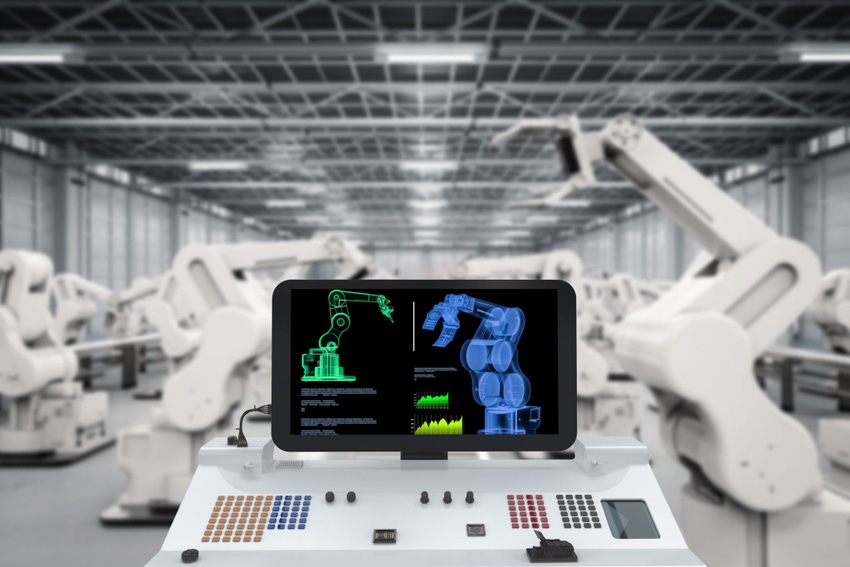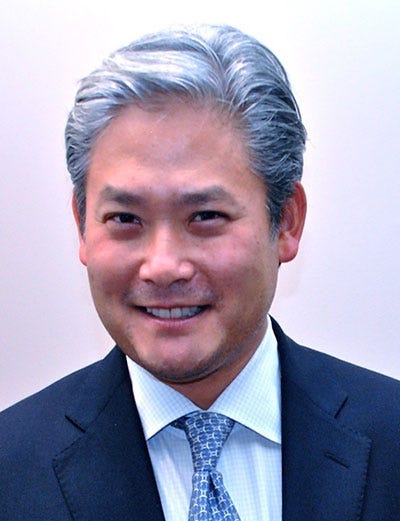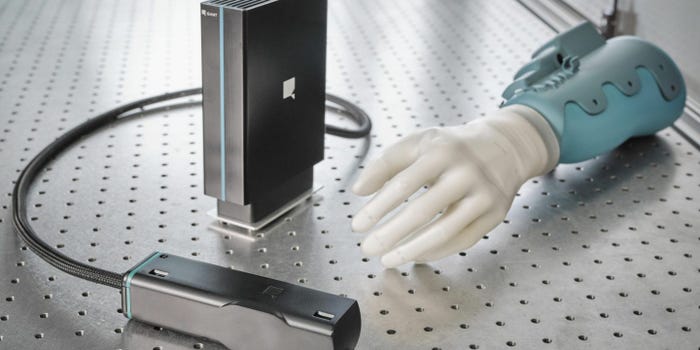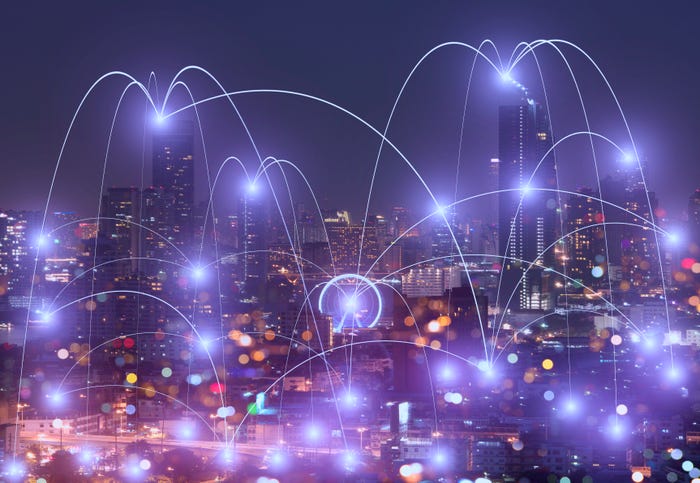Not long ago, many in the industrial sector were skeptical of IIoT’s potential. Now, the concept of the digital transformation of industries is a mainstream concept, but many firms need guidance to keep IIoT projects on track.
November 1, 2017

Though elusive in meaning, the concept of “digital transformation” has become a firm priority for industrial firms in recent years. “There isn’t a client I go to that isn’t in flight around a digital transformation initiative,” declared Jeffrey Liu, global coordinating partner for EY. Two years ago, few professionals in the industrial sector saw its significance. Now, most industrial firms have some sort of digital transformation framework in place, but many are still at an early stage.
The digital transformation of industries seems to be inevitable, the shift is gradual. A 2016 McKinsey survey found that industries were on average only 40% digitized. Average- and bottom-performing firms can expect pressure on their revenue and earnings before interest and taxes.
Achieving the requisite level of organization-wide digital fluency to make industrial digital transformation projects succeed, however, is tough work, says Liu, who leads EY’s Industrial Internet Alliance with GE. In the following Q&A, which took place at GE’s Minds + Machines event in San Francisco, Liu shares his vision for digital transformation of industries and explains why education is often a central consideration for industrial firms creating a digital transformation framework.
In your work, how do you help bring abstract-sounding concepts like the digital transformation of industries and IIoT to life?

Liu: Our approach is to expand what a vendor like GE would be talking about in terms of outcomes. We start with the application or outcome focus. It could be predictive analytics. For instance, we are working with a global tire manufacturer that makes consumer and highly specialized mining and industrial tires. It could be within the scope of our project to work with their sensorized equipment on what is becoming a classic predictive maintenance use case, but we could also extend that, working with them to give inventory as it is produced a tracking number — almost like a license plate or Social Security number so that there is a quality aspect that can feed back. In the worst case, if there is a manufacturing fault, you can identify lots and things like that.
What are your thoughts on helping industrial companies win buy-in from various stakeholders for IIoT projects?
Liu: There is an OT base that focuses on things like maintenance, efficiency and demand forecasting. If you talk to the manufacturing head and even the CFO, they see the benefits. It is quantifiable — science, math, physics and statistics from the models derived from sensor data.
What should CEOs focus on to see the benefits of IIoT projects?
Liu: No. 1, it folds right into their quality metric as well as their customer satisfaction mission.
Companies with ambitious IIoT projects are seeing outcomes that are starting to affect the broader supply chain in a ripple effect. When you can do better demand forecasting, your WIP and your spare-parts inventory can all become a lot more agile.
In a broad context, one of the things that is happening is you can reduce held inventory.
Going back to the tire manufacturer example, held inventory is important with tires because they have an expiration date and get more brittle as they sit on a shelf.
IoT can change all of that. You can improve your supply chain, distribution and even your retail environment. That becomes a more significant story — a strategic business benefit that is coming from the IoT outcome in the first place.
In our history as a consulting firm, we have been working on supply chain issues. We have Six Sigma’d and leaned out many of our customers. Now we are seeing that there is a new catalyst that shifts the performance environment, which is the true digital transformation story. This has a big impact on client strategy and overall operational strategy.
What kind of educational barriers are you seeing in industrial companies seeking to use IoT to redefine their operations?
Liu: When you change the maintenance paradigm and you [have] a near-retiring worker who is used to a scheduled maintenance strategy, and you are telling him not to take the machine down for calendar repair because it can go for another two cycles, you might get some pushback. There can be some behavior change that needs to happen. There is a digital fluency that has to go through the whole organization.
How do you help bridge the gap between IT and OT?
Liu: That’s a simple question but a complex answer.
There is certainly a direct interface that our clients and teams that have worked in financial systems are beginning to recognize.
An example would be an asset management application that can track the value of assets over time, the depreciation schedule and the list of parts in inventory. When we work with our clients to have those things flow into an ERP, we will tell them to look at asset performance management. Their reaction is: “Oh, our ERP does that.” But the truth is, it doesn’t because it is not on the shop floor, and it is not in the machine.
Bridging the gap is first getting our clients to understand that there is another side of the coin, which is the OT environment. But then they quickly get the connectivity between predictive maintenance data and its impact. You might be able to extend the life of an asset from four years to six years. That is important data to flow through your general ledger, balance sheet and amortization schedule.
A digital transformation project should be spearheaded by a new executive like a chief digital officer or chief transformation officer. If that person isn’t separated from the CIO or traditional IT department, then there is a higher likelihood for the transformation to not live up to expectations or that it will fail. From an execution perspective with the client, we like to see a separate executive doing the digital transformation.
If you look at it from a CFO or pure IT environment, most of our customers don’t want to do anything that resembles rip and replace. And when they see digital technology as doing that, they don’t see that it is a separate technology that has to link to their enterprise environment. Or they might look for ROI on the installed base of enterprise software or equipment and not relate it to the machine or the capital asset itself.
It can be a pretty interesting conversation to actually get them through.
What role does education play in these types of projects?
Liu: A lot of the requests we get from our clients are around digital education and organizational education. One side of it is that you have workers used to a traditional environment or certain protocols that need retraining, but it is also that millennials want to learn about this stuff in a much different way. There are often programs that are typically running in parallel with the actual operational transformation to help both of these groups
About the Author(s)
You May Also Like


.png?width=700&auto=webp&quality=80&disable=upscale)
.png?width=300&auto=webp&quality=80&disable=upscale)


.png?width=300&auto=webp&quality=80&disable=upscale)